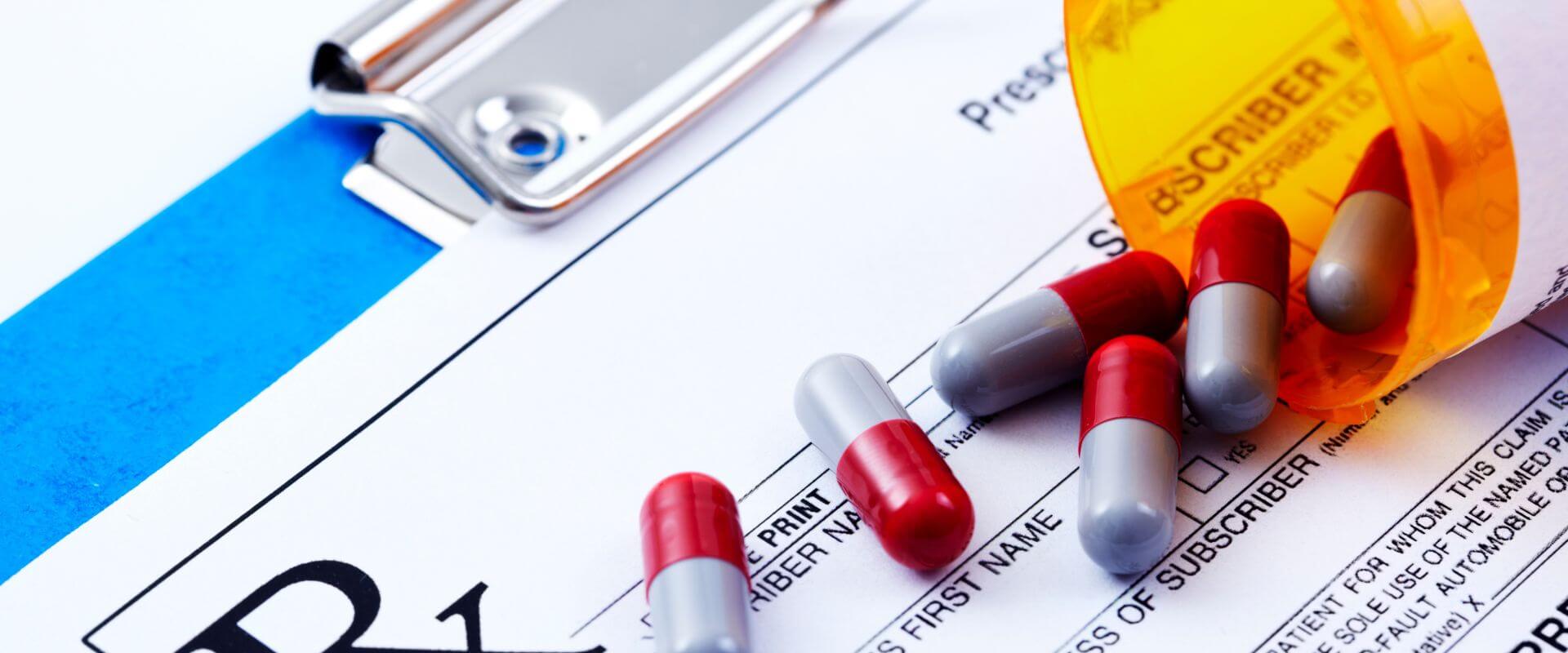Medicare Part D is the federal health insurance program managed through private health insurance companies. These private health insurers provide prescription drug coverage (Part D) to beneficiaries. It is for persons 65 years and older, certain younger people with disabilities, and people with end-stage renal disease. These Part D plans help you reduce the cost of prescription drugs that can help keep you healthy and prevent complications from diseases.
As a Medicare beneficiary, you can either sign up for a standalone Medicare Part D plan, which goes alongside Original Medicare benefits, or decide to enroll in a Medicare Advantage plan that provides prescription drug coverage.
How Medicare Part D Works
Medicare Part D is simply insurance for your medication needs. You pay a monthly premium to an insurance carrier for your Part D plan. In return, you use the insurance carrier’s network of pharmacies to purchase your prescription medications. Instead of paying full price, you will pay a copay or percentage of the drug’s cost. The insurance company will pay the rest.
Here are the stages of the Medicare Part D drug plan:
Annual Deductible: Some Medicare Part D plans offer prescription drug coverage with an initial deductible that beneficiaries must pay out-of-pocket before their plan can start. The acceptable Part D deductible in 2022 is $480. The plans may charge members the full deductible, partial deductible, or entirely waive their deductible. Before entering the initial coverage, members will pay the network discounted fee for their medications until their plan reckons that the deductible has been satisfied.
Initial Coverage: During this phase, your Medicare Part D prescription drug plan will provide cost-sharing coverage based on your drug formulary. Cost-sharing is where the plan shares with you the retail cost of the prescription drug covered with the coinsurance or copayment. The initial coverage usually extends to the part where your medication total retail cost reaches $4,430 in 2022, but some Part D plans limit the cost to about $2,000.
The Coverage Gap (Donut Hole): After reaching the initial coverage limit, the Medicare beneficiary will enter the donut hole. During this phase of the coverage, you’ll only pay 25% of all your formulary drugs. The gap spending will remain until you have reached $7,050.
Remember that to get into the coverage gap, Medicare monitors the full cost of drugs you and the private health insurance firm have spent. When it comes to getting out of the coverage gap, Medicare counts only what the beneficiary has paid in coverage gap spending, copays, and deductibles that year.
Catastrophic Coverage: When you spend more than $7,050 for medication, you’ll be covered by catastrophic coverage – here, your Medicare Part D will step in to pay 95% of the costs of the medications. When you reach this stage, you will remain in the coverage area for the remainder of the calendar year.
Rules Of Medicare Part D Coverage
Medicare allows drug plan carriers to apply certain rules for safety reasons and also for cost containment. The most common utilization rules that you may run into are:
- Quantity Limits – a restriction on how much medication you can purchase at one time or upon each refill. If your doctor prescribes more than the quantity limit, the insurance company will need him to file an exception form to explain why more is needed.
- Prior Authorization – a requirement that you or your doctor must obtain plan approval before allowing a pharmacy to dispense your medication. The insurance company may ask for proof that the prescription is medically necessary before they allow it.
- Step Therapy – the plan requires you to try less expensive alternative medications that treat the same condition before they will consider covering the prescribed medication. If the alternative medication works, both you and the insurance company save money. If it doesn’t, your doctor will need to help you file a drug exception with your carrier to request coverage for the original medication prescribed.

How are Prescription drugs covered with Medicare?
Original Medicare does not cover prescription drugs. However, Part D Prescription Drug Plans are available to fill this coverage gap. Medicare Advantage Plans are an alternative to Original Medicare that offers prescription drug coverage in most cases.
A Medicare Prescription Drug Plan (Part D) adds drug coverage to Original Medicare. To join a drug plan, you can enroll on the Medicare Plan Finder, complete a paper enrollment form, call the plan or call 1-800-MEDICARE.
Medicare sets a standard level of coverage for prescription drug plans, which vary in the prescription drugs they cover and in costs. Part D plans have their own list of which drugs are covered, which is called a formulary. The plans include brand-name and generic prescription drugs and cover at least two drugs for each of the most commonly prescribed categories and classes.
If your specific prescription drug is not on your plan’s formulary, a similar drug should be available. You and your prescriber can request an exception if none of the drugs on the formulary will work for your condition. An exception can also be requested if you need a higher quantity than is generally available. Drug plan coverage rules place quantity limits for safety and cost reasons.
Plans place their covered drugs into tiers on their formularies. Tiers are divided by cost and differ for each plan. Commonly, the lowest tier is for generic prescription drugs and requires the lowest copayment. Preferred brand-name drugs follow in the next tier with a higher copayment. Non-preferred brand-name drugs are in a higher tier with a higher copayment. Specialty, high-cost prescription drugs are in the highest tier and require the highest copayment.
Drug coverage may change throughout the year if your plan follows guidelines set by Medicare. The formulary may change if new drugs or new medical information become available. Drugs deemed unsafe by the Food and Drug Administration will be immediately removed. Brand-name drugs may be removed in favor of generic drugs. You will be given 30 days advance notice of any changes to a drug you are taking or given a month’s supply at the previous rate when you request a refill.
If you decide not to sign up for Part D when you are first eligible, you will likely pay a late enrollment penalty. This gets added to your monthly premiums and generally lasts for as long as you have Medicare prescription drug coverage. You will not have a fee if you get Extra Help from Medicare or have other creditable prescription drug coverage.
Extra Help is for people with limited income and resources. It helps to cover the costs of Part D like premiums, deductibles, and coinsurance. If you have Medicaid, receive a Supplemental Security Income, or are awarded Extra Help by Social Security, you can benefit from this program.
Medicare Advantage Plans
If you want a combined plan, Medicare Advantage Plans covers your Part A (hospital insurance) and Part B (medical insurance) coverage and prescription drug coverage (Part D). To join a Medicare Advantage Plan, you must first be enrolled in Original Medicare – Part A and Part B.
Eligibility and enrollment
Medicare Part D is a plan run by private insurance firms to offer coverage for prescription drugs. Medicare requires beneficiaries to have some form of prescription drug coverage. If you don’t have any form of coverage, you may have to pay a penalty.
Coverage with Part D includes:
- Antidepressants
- HIV/AIDS treatment
- Immunosuppressants
- Antipsychotic medications
- Anticonvulsive treatments for seizure disorders
- Anticancer drugs (unless they are being covered under Part B)
Also, Part D covers most vaccines unless they are already covered under Part B.
Medicare Part D Eligibility
To enroll in the Part D plan, you must have Original Medicare and live in the plan service area you want to join. If you have a bundled Medicare Part C plan that already has prescription drug coverage, you can’t sign up for a standalone Medicare Part D plan.
No matter how you obtain coverage or qualify for Medicare Part D, you will get the same level of coverage.
When To Enroll
It is best to enroll in Part D during the Initial Enrollment Period, which begins three months before your 65th birthday and ends three months after. This period is where you will also enroll in Original Medicare.
If you delay your enrollment in Part D and do not have drug coverage, you will have a permanent late enrollment penalty to pay when you do enroll.
If you choose to enroll in a Medicare Advantage Plan that provides prescription drug coverage, you should always check to make sure your needed prescriptions will be covered.
How Can I Enroll
You can enroll in the service area or through an insurance carrier. You also have the option to enroll on Medicare’s website.
For more information about Medicare Part D eligibility, contact Turning 65 Solutions. Our experienced Medicare insurance experts can help you make the best decision regarding your prescription drug coverage.

